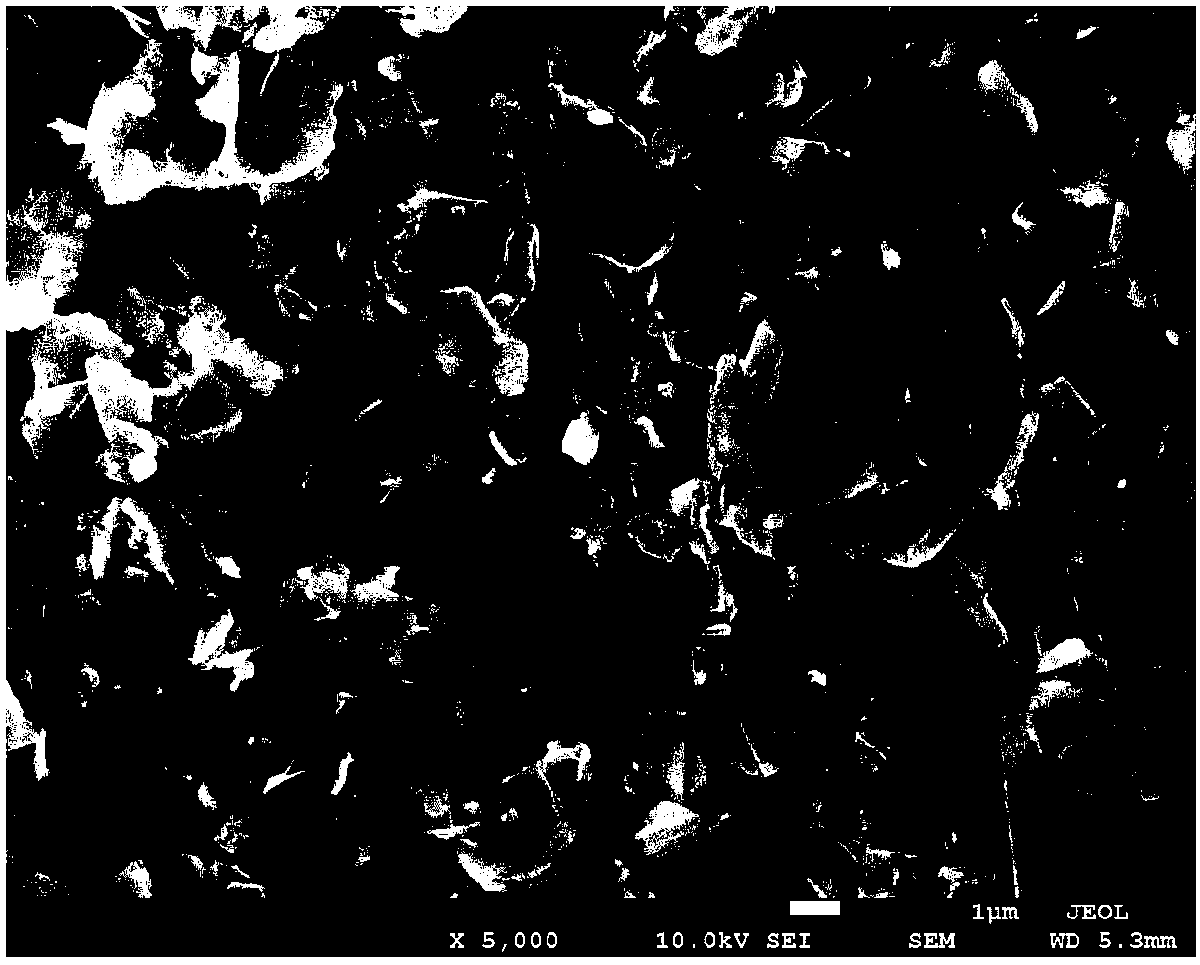Stripping solution for preparing two-dimensional nanomaterial and application thereof
A technology of two-dimensional nanomaterials and solutions, applied in the direction of nanocarbon, nanotechnology, phosphorus preparation, etc., can solve the problem of graphene electronic structure and crystal integrity damage, process condition control condition constraints, limit application and industrialization development, etc. problems, to achieve the effects of easy industrial application, avoiding secondary aggregation, and good chemical stability
- Summary
- Abstract
- Description
- Claims
- Application Information
AI Technical Summary
Problems solved by technology
Method used
Image
Examples
Embodiment 1
[0036] First, add 10ml of ethanol, 10ml of isobutanol, 15ml of tert-butanol, and 100ml of glycerol into 1L of deionized water; Methylpyrrolidone, 0.05g of 9-anthracene carboxylic acid, and 0.01g of pyrene-1-sulfonic acid sodium salt were added to the above aqueous solution, and after uniform stirring, the stripping solution was obtained.
[0037] Stir and disperse 100g of flake graphite in the above solution. After mechanical shearing and ultrasonic stripping, graphene with a thickness of about 3nm and complete crystal structure can be obtained. The atomic force microscope and scanning electron microscope microscopic pictures are as follows: figure 1 , figure 2 shown.
[0038] Mechanical shearing and ultrasonic stripping are performed as follows:
[0039] (1) Submerge the cutter head of the emulsification cutting machine under the liquid surface, and cut the mixed solution for 2 hours under the condition of 40°C water bath, keeping the cutter head rotation speed at 8000rpm....
Embodiment 2
[0056] First, add 10ml of ethanol, 100ml of isopropanol, 10ml of n-butanol, 50ml of tert-butanol, and 20ml of glycerol into 1L of deionized water; Add sulfoxide, 0.3ml nitrogen-methylpyrrolidone, 0.02g 9-anthracene carboxylic acid, and 0.05g pyrene-1-sulfonic acid sodium salt into the above-mentioned aqueous solution, and stir to obtain a peeling solution. 100g molybdenum disulfide The powder is stirred and dispersed in the above solution, and after mechanical shearing and ultrasonic stripping, molybdenum disulfide nanosheets with a thickness of 1-10 nm and good crystallinity can be obtained. Compared with pure aqueous solution, molybdenum disulfide prepared by this solution The yield of nanosheets was increased by about 2 times.
Embodiment 3
[0058] First, add 10ml of ethanol, 10ml of n-propanol, 20ml of isopropanol, 15ml of tert-butanol, and 100ml of sec-butanol into 1L of deionized water; Dimethyl formamide, 1ml dimethyl sulfoxide, 0.1g 9-anthracene carboxylic acid, 0.06g pyrene-1-sulfonic acid sodium salt were added to the above aqueous solution, and after stirring evenly, the peeling solution was obtained. 30g black phosphorus powder Stirring and dispersing in the above solution, after mechanical shearing and ultrasonic stripping, black phosphorus nanosheets with a thickness of 1-10 nm can be obtained. Compared with pure aqueous solution, the yield of black phosphorus nanosheets prepared by this solution is increased by about 3 times.
[0059] In the peeling solution developed by the present invention, and under the composite action of mechanical shear and ultrasound, the layered solid powder can be efficiently and cleanly peeled into two-dimensional nano-sheets, such as graphene, molybdenum disulfide, black ph...
PUM
| Property | Measurement | Unit |
|---|---|---|
| Thickness | aaaaa | aaaaa |
| Thickness | aaaaa | aaaaa |
Abstract
Description
Claims
Application Information
 Login to View More
Login to View More - R&D
- Intellectual Property
- Life Sciences
- Materials
- Tech Scout
- Unparalleled Data Quality
- Higher Quality Content
- 60% Fewer Hallucinations
Browse by: Latest US Patents, China's latest patents, Technical Efficacy Thesaurus, Application Domain, Technology Topic, Popular Technical Reports.
© 2025 PatSnap. All rights reserved.Legal|Privacy policy|Modern Slavery Act Transparency Statement|Sitemap|About US| Contact US: help@patsnap.com


